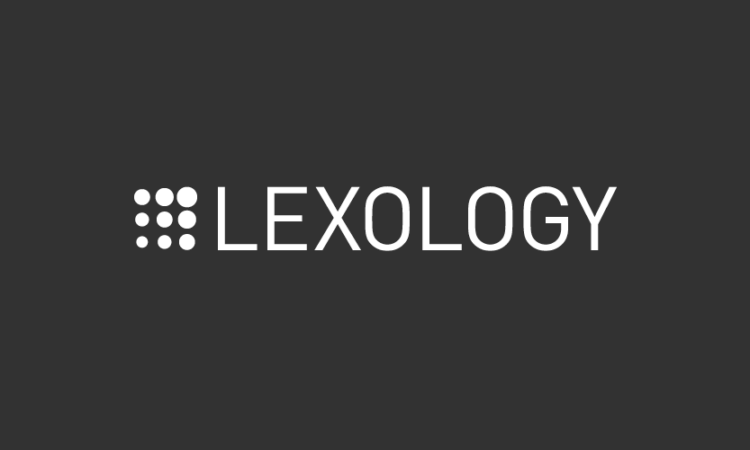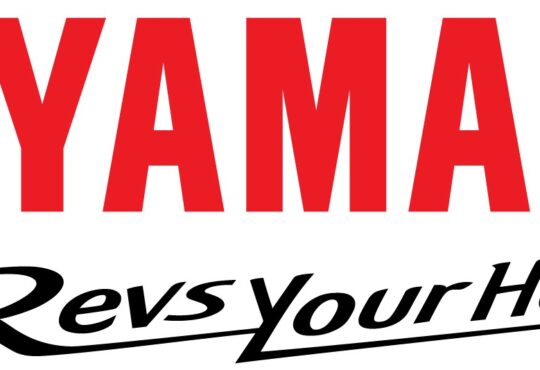
All questions
Engagement with shareholders
i Shareholder rights and powers
Shareholders are permitted to vote at annual and special meetings. State corporation law typically entitles shareholders to vote on matters such as elections of directors, amendments to the corporation’s charter, transactions in which the corporation is acquired and sales of substantially all the corporation’s assets. Stock exchange rules also grant shareholders the right to vote on certain matters; for example, the NYSE requires a shareholder vote prior to the issuance of stock that will exceed 20 per cent of the voting power or common stock outstanding after the issuance. Corporations must also conduct a non-binding shareholder vote at least every three years to approve the compensation of their NEOs – votes that ISS policy also encourages – and an additional non-binding shareholder vote at least every six years to determine the frequency of these say-on-pay votes.21 Non-binding advisory votes are also required with respect to golden parachute compensation arrangements triggered by a merger or acquisition transaction. However, the Jumpstart Our Business Startups Act (JOBS Act), signed into law in January 2012, exempts newly public ’emerging growth companies’ from say-on-pay votes and certain other requirements for the earlier of five years or until the company meets specified size thresholds.
In addition, Rule 14a-8 under the federal Securities Exchange Act permits shareholders to propose and vote on additional non-binding resolutions, which typically concern issues of social justice or corporate responsibility. In 2022, shareholders voted on 287 shareholder proposals concerning ESG issues (of which 66 proposals focused specifically on environmental issues and 54 focused on lobbying and political issues). ESG issues are becoming increasingly important to shareholders, with large institutional investors announcing a heightened focus on socially responsible investing and certain activist investors launching new funds with the same focus.
ii Shareholder duties and responsibilities
Under Regulation 13D of the Securities Exchange Act, shareholders or groups of shareholders acting in concert who acquire more than 5 per cent of a company’s stock must publicly disclose their ownership stake within the next 10 days. Schedule 13D requires disclosure of the shareholder’s or group’s investment purposes, including any plans or proposals relating to significant transactions involving the company. The disclosure statement must also be amended promptly to reflect any material changes to information previously disclosed. Passive investors acquiring more than 5 per cent of a company’s stock who certify that the securities were not acquired and are not held with the purpose or effect of changing or influencing control of the issuer may instead disclose ownership on a short-form Schedule 13G, the disclosure requirements of which are less onerous than those of the long-form Schedule 13D. In 2022, the SEC proposed amendments to Regulation 13D-G to modernise the beneficial ownership reporting rules, including by shortening certain filing deadlines and expanding the types of securities that are included in the calculation of beneficial ownership. If implemented, the proposed amendments would represent the most significant reforms to beneficial ownership reporting since the rules were initially adopted in 1968 and would, importantly, increase the timeliness and quality of information that all market participants would have. The duties and responsibilities of shareholders in the United States differ in important ways from those of shareholders in other countries. Among other things, the mandatory offer concept common in Europe, India and other countries – in which an acquisition of a certain percentage of securities requires the bidder to make an offer for either the balance of the outstanding shares or an additional percentage – is very different from US practice, which emphasises disclosure of beneficial ownership but does not mandate a takeover bid. In addition, as discussed in further detail below, permissible deal protection structures, pricing requirements and defensive measures available to companies in the United States also differ, with boards generally benefiting from greater latitude to take actions to protect the corporation from shareholder activism and takeover attempts without first obtaining shareholder approval.
iii Shareholder activism
Hostile takeovers and shareholder activism – the capture of corporate control or influence over corporate policy by discrete groups of shareholders, typically to subjugate a corporation’s long-term strategy in pursuit of short-term profits or the return of capital to shareholders – are a significant threat to US corporations, regardless of industry, size or performance.22 While traditional activism focused on short-term profit, stock price and total shareholder return (TSR) continues, a new set of activists has emerged, emphasising ESG considerations. The activism landscape has also evolved to include dual purpose activists who combine both TSR and ESG arguments, as well as ‘pincer attacks’ from ESG and TSR activists acting independently or in concert against the same company.23 In addition to cultivating strong relationships with a long-term institutional shareholder base, dealing with unsolicited offers and pressure from shareholder activists is more art than science.24
iv Takeover defences
A critically important tool for enabling boards of directors to discharge their fiduciary duties in the face of the threat of hostile takeovers and shareholder activism under current law remains the shareholder rights plan, or poison pill.
The shareholder rights plan entails a dividend of special rights to each of the corporation’s shareholders. In the event that a shareholder amasses equity ownership, without the approval of the board of directors, in excess of a predetermined threshold – often between 10 and 15 per cent (with perhaps a higher threshold used for passive institutional investors) – the rights held by every other shareholder trigger and convert into the right to purchase stock of the corporation at a price substantially below the current market value. Alternatively, most rights plans provide that the board of directors may instead choose to exchange one share of common stock for each right held by shareholders other than the hostile bidder or activist shareholder. Either way, the result of this conversion or exchange is that the ownership position of the triggering shareholder is substantially diluted.
The rights plan is the only structural takeover defence that allows a board to resist a hostile takeover attempt, and it has also been deployed in numerous activism situations. Although it does not provide complete immunity from a takeover, it allows the board to control the process and provides the corporation with leverage to bargain for a higher acquisition price and the power to reject underpriced or otherwise inappropriate bids. It is also implemented exclusively by the board of directors and does not require shareholder approval, so it can be put in place in very short order.
The principal disadvantage of the rights plan is that ISS will typically recommend a withhold vote for all directors after the adoption of a rights plan that the company does not subject to shareholder ratification within a year of adoption. As a result, and because a rights plan can be adopted quickly, most corporations adopt a rights plan only after a takeover threat appears – and prior to that time the plan is ‘kept on the shelf’. In the early months of the covid-19 pandemic, faced with a precipitous decline in their stock price, a number of companies quickly adopted a rights plan in the hope of deterring predatory activist investors or opportunistic takeover bids; however, the prevailing response in the absence of a specific threat was to have plans ‘on the shelf and ready to go’ at short notice.25
Keeping a rights plan on the shelf offers almost all of the protection of an active rights plan without any risk from an adverse ISS recommendation, but it can leave a corporation vulnerable to stealth acquisitions, in which an activist shareholder purchases just under 5 per cent of a company’s stock and then buys as much as possible on the open market within the next 10 days. Because Regulation 13D under the Securities Exchange Act gives shareholders 10 days after acquiring more than 5 per cent of a company’s stock to publicly disclose their ownership stake, this technique can result in an acquisition of a substantial portion of a company’s equity before it is ever disclosed.26 Similarly, Regulation 13D patrols a narrow beat with regard to derivatives. Although all interests must be disclosed after a shareholder crosses the 5 per cent threshold, only some derivative interests are counted towards that threshold – generally, only those that are settled in kind (for stock of the corporation rather than for cash from the derivatives counterparty), and only those that can be exercised within the next 60 days.27 However, because an activist may accumulate its position in a corporation, without public disclosure, the board of directors may not have any warning of the activist’s behaviour, and there is thus some risk that a company may not be able to adopt a rights plan in time to avoid a significant accumulation of stock in unfriendly and opportunistic hands. As discussed above, the SEC proposed amendments in 2022 intended to improve market transparency in respect of beneficial ownership reporting, derivative ownership and short selling, noting that information asymmetry can increase risk and reduce liquidity in the US securities market.
Other defences against activist shareholders include a classified board of directors, limiting shareholders’ ability to call a special meeting, adopting an advance notice by-law that requires rigorous disclosure of a shareholder’s holdings and other interests in a corporation to nominate a director candidate or propose other items of business at a special or annual meeting, and limiting shareholders’ ability to act by written consent (67 per cent of S&P 500 companies prohibit shareholder action by written consent).
Overall, the availability of takeover defences has been steadily eroded over the years, predominantly as a result of shareholder activism led by ISS, union and public pension funds and academics. Today, only 1 per cent of S&P 500 companies have a rights plan in effect, down from 45 per cent in 2005 and 60 per cent in 2000. In 2022, shareholders at 111 companies voted on shareholder-initiated proposals to grant shareholders the right to call special meetings or to decrease the requirements to call a special meeting, with an average level of support of 48 per cent, and shareholders at six companies voted on shareholder-initiated proposals to grant shareholders the right to act by written consent or to decrease the requirements to act by written consent, with an average level of support of 80 per cent.
v Contact with shareholders
Shareholder relations have become increasingly complicated as a result of activist trends and have required greater attention at the board level, prompting a renewed focus on the proper role of direct dialogue between boards and shareholders and the benefits and disadvantages of more open, regular lines of communication. Shareholder engagement is increasing as both companies and institutional investors have sought to engage in more regular dialogue on corporate governance matters. A report by the EY Center for Board Matters at Ernst & Young LLP reported that 91 per cent of Fortune 100 companies included disclosures about their shareholder engagement efforts in their 2019 proxy statements, compared with 82 per cent in 2016.28 Recent disclosure reform efforts have also sought to require institutional shareholders to report their share positions on a more current basis as of the end of each quarter than is now the case, as well as suggesting more frequent reporting. In 2020, the SEC proposed an amendment to Form 13F that would exempt from filing all asset managers holding less than US$3.5 billion (up from the current US$100 million) of Section 13(f) securities, thereby slashing the number of reporting managers by 90 per cent and effectively abolishing Form 13F as a reporting system for most investors.29 The SEC’s proposal, viewed by investors, companies and their advisers as flying in the face of their repeated demands for greater transparency and shareholder engagement, was met with quick and widespread backlash, and the SEC shelved the proposal shortly afterwards.
Management generally serves as the primary caretaker of shareholder relationships, with the board providing oversight as to the presence of an effective shareholder relations programme. However, institutional investors are increasingly voicing their expectation that companies should provide access to independent directors. Some activists have also been seeking direct dialogue generally with companies in which they invest, independent of whether operational or other performance issues exist. In 2016, a group of large public companies and investors jointly developed and endorsed a set of principles on corporate governance that, among other things, called for active engagement with shareholders on key issues. Similarly, in 2018, BlackRock, Inc called for a new model of shareholder engagement based on year-round discussions between management, the board and shareholders about long-term value creation and long-term corporate contribution to society at large. Where shareholders request direct communications with the board, it may be desirable for directors, in appropriate circumstances and following consultation with management, to accommodate those requests. The policies and arrangements best suited for any given company will depend on, among other things, the preferences of directors, the nature and extent of existing relationships with major shareholders, the expressed preferences of those shareholders, and the structure and staffing of the company’s existing shareholder relations programme.
In 2000, the SEC promulgated Regulation FD to prevent companies from selectively disclosing material and non-public information to large investors and analysts. Under Regulation FD, certain employees of a company – including directors, officers, public relations or investor relations professionals, and others with similar responsibilities or who regularly communicate with market professionals or shareholders – may intentionally disclose material non-public information about a company only if the material is simultaneously disclosed to the public. If they disclose the information unintentionally, the same information must promptly be disclosed publicly. Disclosures made to the press and disclosures made in the ordinary course of business (e.g., customary communications with distributors or customers) are exempted. Intentional disclosures include disclosures in which the employee was reckless in not knowing that the information was material and non-public.
Information is considered material if there is a substantial likelihood that a reasonable investor would consider the information important when making investment decisions, and if the information adds significantly to the total mix of information available. Even if information is quantitatively insignificant, it may still be considered qualitatively material, and information is more likely to be deemed material in hindsight in light of subsequent reactions by the market. The SEC has issued guidance that certain categories of information are particularly likely to be considered material – among them information about earnings; corporate events such as mergers, bankruptcy, tender offers or changes in control; and products, discoveries and developments with respect to material contracts, customers or suppliers. Although purported clarifications to previously announced information can themselves be considered material and non-public, ‘Regulation FD does not require that corporate officials only utter verbatim statements that were previously publicly made.’30
Regulation FD makes unscripted dialogues between company officials and individual analysts and shareholders risky.31 Although it is unusual for companies to prohibit such meetings altogether, they should be approached carefully and by professional spokespersons only. A board of directors should adopt corporate governance guidelines that ensure that the company’s media strategy is executed only through approved channels, and with the understanding that analysts and shareholders will often engage in such private dialogues with the hope of ferreting out exactly the sort of information that Regulation FD forbids company officials from disclosing in such a forum.







